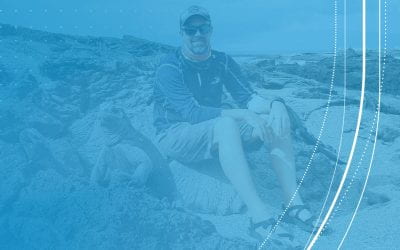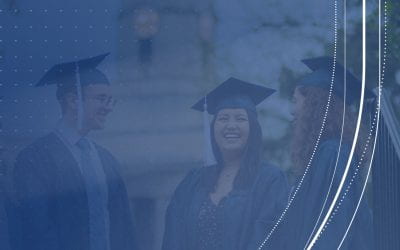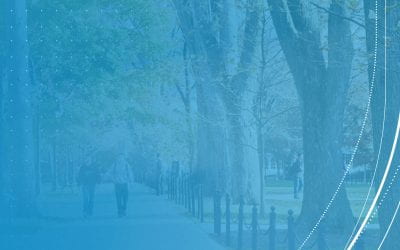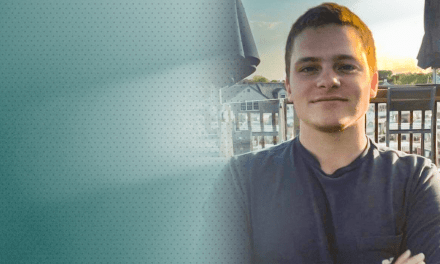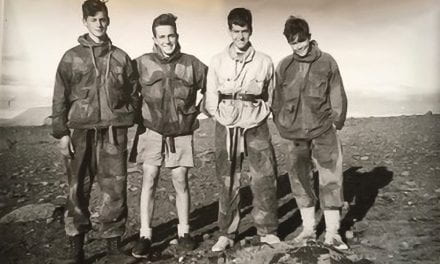
Hearing every voice
Developing, improving and disseminating technology to assist people who cannot communicate through speech or writing
This article was written by Aaron Wagner and originally published by Penn State News on September 24, 2020.
Communication is central to every human being’s ability to develop relationships, work, and navigate the world. According to researchers, however, approximately five million Americans have complex communication needs. For those individuals, speaking or writing are not possible in many day-to-day situations.
New funding
Because of this critical need, a new, five-year, $4.6 million award from the National Institute on Disability, Independent Living, and Rehabilitation Research (NIDILRR) will fund research, technology development, training and dissemination to assist people who cannot communicate through speech or writing.
“Each individual has this tremendous opportunity to contribute to society, and with the right tools and supports we can unlock that potential. The RERC on AAC exists to help people — regardless of their disability and personal circumstance — unlock that potential.”
RERC on AAC: Supporting communication for all
Janice Light, Hintz Family Endowed Chair in Children’s Communicative Competence and professor of communication sciences and disorders at Penn State, is principal investigator of the new project. The award will fund the Rehabilitation Engineering Research Center on Augmentative and Alternative Communication (RERC on AAC), a national collaboration of researchers and engineers who conceptualize, research, develop, and train people to use new technologies to support communication.
“The center develops tools for communication that allow people to participate in education, employment, social activities, and to do all of the communication functions needed to be full members of society,” Light said.
The RERC on AAC works to ensure that all individuals with complex communication needs, regardless of their abilities, background or circumstance, have the most appropriate and useful tools to facilitate accurate and timely communication.
The origin of complex communications needs
Many circumstances can lead to complex communications needs, including autism spectrum disorder, cerebral palsy, intellectual disabilities, traumatic brain injuries, strokes, ALS and dementia. Some individuals with complex communication needs have limited or no ability to communicate using speech. In some cases, such as full body paralysis, individuals cannot move any part of their body except for perhaps their eyes. Furthermore, individuals of all ages, cultural backgrounds, and economic backgrounds can be born with or develop complex communication needs.
“Each individual that we serve comes with a unique set of skills and needs. Similarly, they function within a family and community that have different sets of needs and values,” Light said. “Because each situation is so complex, we have always followed a model of personalized rehabilitation, where we combine an understanding of the research evidence with an understanding of the uniqueness of each person’s situation.”
RERC on AAC
The Rehabilitation Engineering Research Center on Augmentative and Alternative Communication (RERC on AAC) develops new approaches to AAC, distributes them, and encourages their adoption.
“Nothing about us without us”
The most important way that the RERC on AAC’s researchers ensure that their technology works for real people can be summed up with their oft-repeated maxim, “Nothing about us without us.” This means that nothing is done for people with complex communication needs without including those people in the work and decisions.
Individuals with complex communication needs participate in every step of the RERC on AAC’s work. In this way, the center is able to truly understand and respond to the real-world needs of the people they serve. When new technology is designed, people with complex needs are evaluating its usability and effectiveness. When researchers from the RERC on AAC present their innovations at academic or professional conferences, individuals with complex communication needs participate in the presentations.
“Our partnerships with the people who use AAC technology is essential to the work that we do,” explained David McNaughton, professor of special education at Penn State and director of training and dissemination for the RERC on AAC. “They are the ones who know what needs are being met with current technology, and what needs must be addressed with a new generation of AAC technology supports.”
Next steps
Over the next five years, the RERC will focus on technology for individuals whose communication needs are extremely complex, including very young children, individuals who require significant support to communicate, and people with extremely limited movement.
“Each individual has this tremendous opportunity to contribute to society, and with the right tools and supports we can unlock that potential,” Light explained. “The RERC on AAC exists to help people — regardless of their disability and personal circumstance — unlock that potential. This new award from NIDILRR will ensure that people with the most complex needs will be served over the next five years.”
Key personnel of the RERC on AAC include Light, who serves as the principal investigator of the RERC and the director of Research and Development for Individuals with Developmental Disabilities; David McNaughton, professor of special education at Penn State, who serves as the director of Training and Dissemination for the RERC on AAC; Susan Fager, director of the Communication Center at Madonna Rehabilitation Hospital in Lincoln, Nebraska, who serves Co-director of Research and Development for Individuals with Acquired Disabilities; and Heidi Koester, president of Koester Performance Research in Ann Arbor, Michigan, who serves as the other co-director of Research and Development for Individuals with Acquired Disabilities.
More News from Around the College
Travel with Penn State Family to the Galapagos Islands
Join HHD’s Carter Hunt, associate professor of recreation, park, and tourism management and anthropology, as the Penn State Alumni Association explores the Galapagos Islands.
Join the Penn State Alumni Association
Join the Pride and become part of the largest, most impactful alumni association in the world. Alumni Association members receive 30-plus benefits and provide opportunities for the next generation of Penn Staters.
HHD Alumni Society Board Members
HHD Alumni Society Meet newly elected HHD Alumni Society Board members Lena is a Financial Advisor at Northwestern Mutual in Wall Twp, NJ. She leads a financial planning practice, following her passion for personal finance and helping people prepare for their future....

